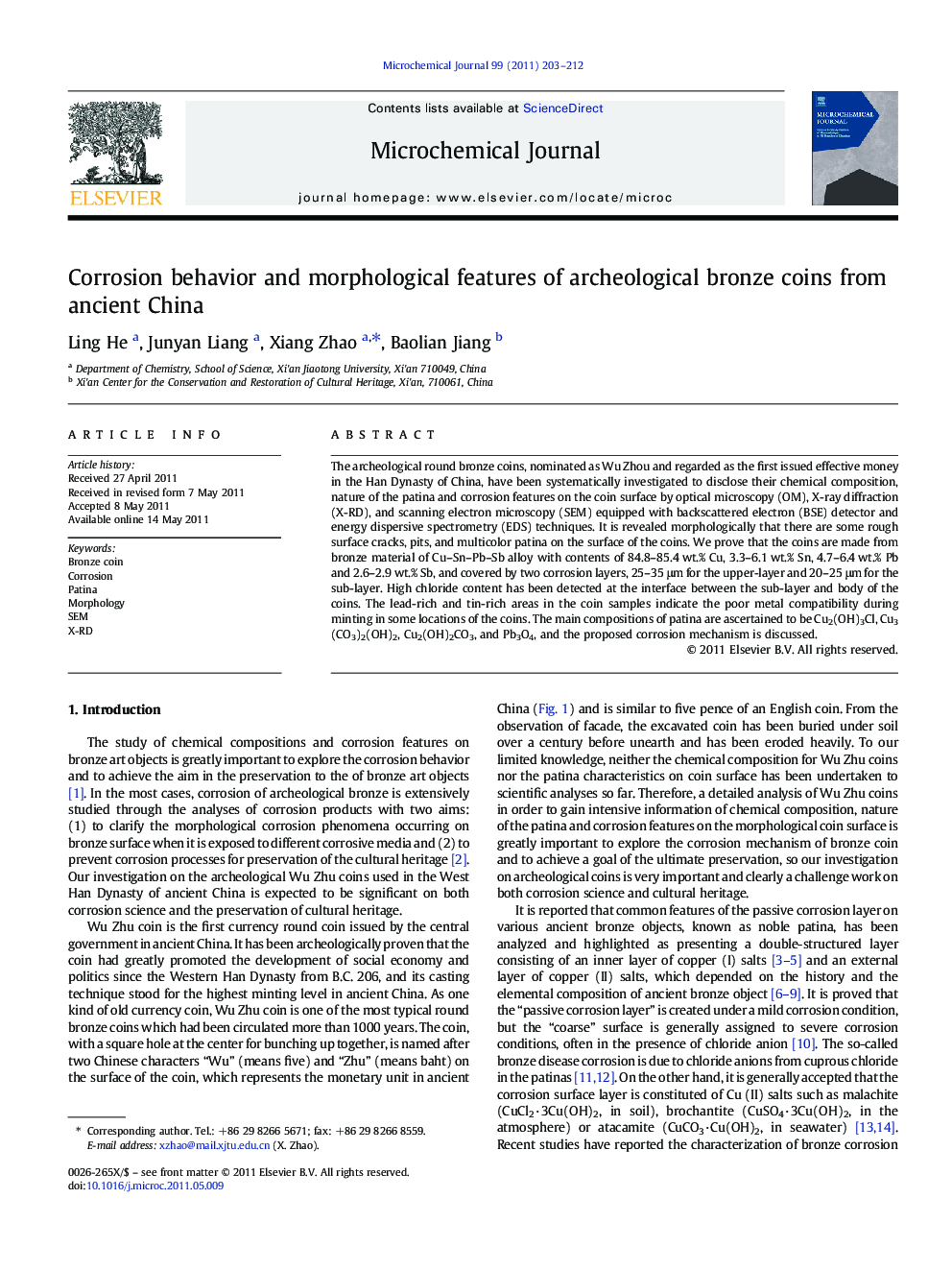| کد مقاله | کد نشریه | سال انتشار | مقاله انگلیسی | نسخه تمام متن |
|---|---|---|---|---|
| 10556834 | 968435 | 2011 | 10 صفحه PDF | دانلود رایگان |
عنوان انگلیسی مقاله ISI
Corrosion behavior and morphological features of archeological bronze coins from ancient China
دانلود مقاله + سفارش ترجمه
دانلود مقاله ISI انگلیسی
رایگان برای ایرانیان
کلمات کلیدی
موضوعات مرتبط
مهندسی و علوم پایه
شیمی
شیمی آنالیزی یا شیمی تجزیه
پیش نمایش صفحه اول مقاله

چکیده انگلیسی
The archeological round bronze coins, nominated as Wu Zhou and regarded as the first issued effective money in the Han Dynasty of China, have been systematically investigated to disclose their chemical composition, nature of the patina and corrosion features on the coin surface by optical microscopy (OM), X-ray diffraction (X-RD), and scanning electron microscopy (SEM) equipped with backscattered electron (BSE) detector and energy dispersive spectrometry (EDS) techniques. It is revealed morphologically that there are some rough surface cracks, pits, and multicolor patina on the surface of the coins. We prove that the coins are made from bronze material of Cu-Sn-Pb-Sb alloy with contents of 84.8-85.4 wt.% Cu, 3.3-6.1 wt.% Sn, 4.7-6.4 wt.% Pb and 2.6-2.9 wt.% Sb, and covered by two corrosion layers, 25-35 μm for the upper-layer and 20-25 μm for the sub-layer. High chloride content has been detected at the interface between the sub-layer and body of the coins. The lead-rich and tin-rich areas in the coin samples indicate the poor metal compatibility during minting in some locations of the coins. The main compositions of patina are ascertained to be Cu2(OH)3Cl, Cu3(CO3)2(OH)2, Cu2(OH)2CO3, and Pb3O4, and the proposed corrosion mechanism is discussed.
ناشر
Database: Elsevier - ScienceDirect (ساینس دایرکت)
Journal: Microchemical Journal - Volume 99, Issue 2, November 2011, Pages 203-212
Journal: Microchemical Journal - Volume 99, Issue 2, November 2011, Pages 203-212
نویسندگان
Ling He, Junyan Liang, Xiang Zhao, Baolian Jiang,